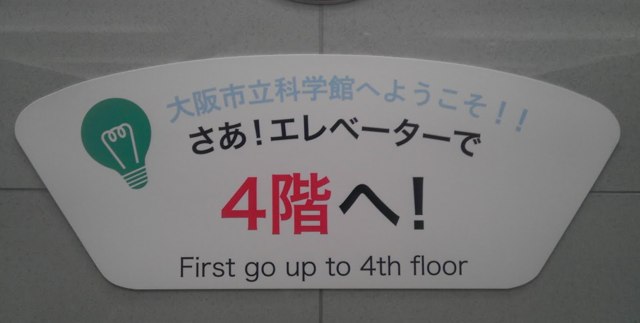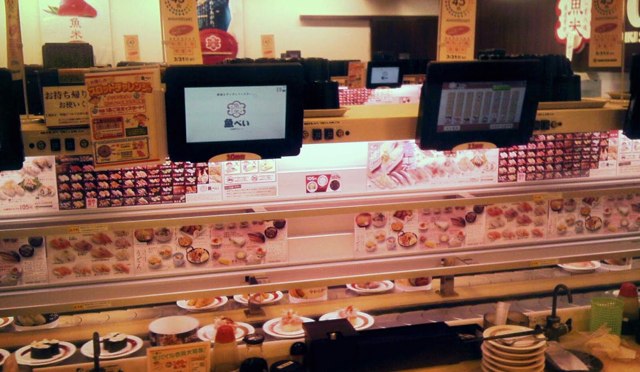Osaka wasn’t even on our radar while we were planning our trip to Japan. We knew we wanted to visit Tokyo, and Oliver was bound and determined to stay in the 9 Hours Hotel in Kyoto, so they were set. But Osaka wasn’t in our plans.
We’d left the end of the trip free, however, and so we had 2 or 3 days unplanned. I’d assumed we head off into rural Japan to experience the less frenetic side of the country, but it turned out to be remarkably difficult to book lodging at the last minute in the rural areas of the country – everyone was heading out into the warm spring air, I suppose – so when we cut our trip to Kyoto short a day we decided to head 40 minutes south to Osaka for the weekend, a move spurred, in part, by snagging a fantastic deal on a last minute room at the Hyatt Regency Osaka.
We found Osaka to be an unexpected delight. More manageable than Tokyo and with a distinctly different flavour, we spent a great weekend there. Here are the kid-focused highlights.
Kids Plaza Osaka
Perhaps the best children’s museum of our trip – indeed, perhaps the best children’s museum we’ve ever visited – Kids Plaza Osaka was just wonderful, and it’s a must-do for any family with children visiting the city.
The facility is built around a multi-level castle-like structure designed by Austrian artist Friedensreich Hundertwasser. I think you could have fun for hours if all you did was explore its towers and slides and ladders and balconies. As you can see in the video above, it’s teeming with kids running and sliding and enjoying the novelty of it all.
Extending out from this castle core are floors devoted to “playing” and “making” and “trying.” There are science-museum-like activities about this like animation, the human body, ecosystems, and a television studio were kids can record an entire newscast (you can watch our try, kindly facilitated by an English speaking guide who wanted to make sure we had a chance at the end of the day). There’s a set of exhibits about the music and clothing and language of countries around the world, a food lab with an activity about the 11 types of sugar, and a really create activity that lets kids use a wheelchair to navigate around a transit station set to see what challenges they’d face.

The signage and interpretation is almost all in Japanese-only, but the activities are so clear and well-signed with pictures that it’s not really an issue.
Kids Plaza is located in a busy neighbourhood filled with restaurants – we ate in the Mos Burger right across the street – and it’s directly connected to the Ogimachi metro station.
Osaka Science Museum
The Osaka Science Museum, in what seemed to us like “downtown Osaka,” was, like the science museum in Tokyo, a solid old-school science museum in the style of the Exploratorium. It was the least accessible museum we visited language-wise, but with the help of our translating mobile phone we managed to make our way.

The museum is spread out over 4 floors and you buy your tickets in the basement and then immediately take the elevator up to the 4th floor to start your visit (there’s an option to purchase a planetarium show ticket for an additional fee at the ticket desk, but we were warned off this as there was no English translation available). Each floor has a different focus: magnetism, astronomy, earth science, chemistry, physics. Surprisingly, it was the earth science floor that caught most of our attention, especially a series of displays illustrating the elements and their relationships to everyday materials:

(That’s a fuzzy photo, but on the top is “earth” and then below it the component materials of earth, and below each of those the more refined versions of those components, and below those the products made from those materials).
Other highlights include a Rubik’s Cube-solved robot in the first floor lobby, and a really fun traffic signal exhibit on the first floor (where you can turn the signals on and off with switches, something that, personally, made me feel omnipotent).
There’s a not-too-exciting-but-serviceable cafeteria on the first floor (you can exit the museum to eat and then re-enter if you like; just show your ticket stub). But we highly recommend you head across the street to Graf Studio (right on the river-side), where you’ll not only find tasty food and drink, but an intriguing marketplace of locally-made products.
Children’s Museum Big Bang
This museum certainly qualifies for the “weirdest architecture in a children’s museum” award: shaped like a UFO landing on Earth, big bang is a sort of hybrid between a children’s museum and a science museum. Located about 40 minutes south of central Osaka by train near a large shopping mall complex, Big Bang was, well, weird. In a mostly enjoyable way.

Oddly, given the shape, there’s not too much emphasis on space or astronomy: on the top floor there was a mixture of science museum activities and a recreation of a historical Japanese street scene where the alleyways played hose to a kindly man showing kids how to wind and throw a traditional wooden top. The highlight of this area was a darkened room that captured your motion and converted it into colourful animations on the screen in front of you; Oliver loved this:
One floor below was a dinosaur and alligator-themed play area. It was noisy and full of activity – the dinosaur is hollow and filled with darkened passageways. Kids seemed to love it; Oliver was a little put off.

Big Bang was unique in the museums and children’s centres we visited for requiring additional ticket purchases for a lot of the activities: the animated 3D movie on the top floor, the crafts activity on the second floor, and an activity we never quite got a handle on that took place inside the tall tower you see in the photo above, all required tickets. One activity that didn’t was a really neat “draw a character on a piece of paper, scan it, and watch it become part of our animated world” exhibit; it’s difficult to do justice to in words, but suffice to say, here’s (our) Archie riding a dinosaur in outer space:

Almost all of Big Bang is Japanese-only, making it a little hard for the English speaker to penetrate completely. We receive a photocopied English-language guide when we arrived that was helpful, but incomplete. I wouldn’t make Big Bang my first stop in Osaka, but we had fun, and for the crazy building alone it’s a fun visit.
Right next door, connected to the train station, is a large shopping mall complex with many places to eat. We particularly enjoyed the “conveyor belt sushi” restaurant that’s close to the station; there’s also coffee, crepes, and a Baskin Robbins inside the mall, and a nice MUJI store if you’ve some additional time to spend.

 I am
I am
Add new comment